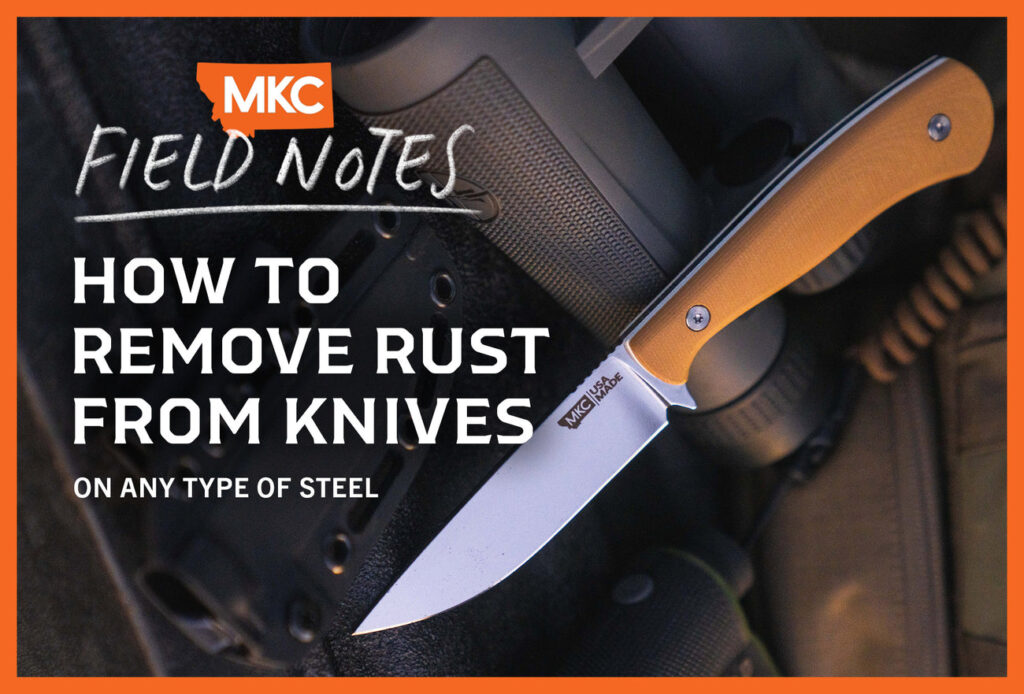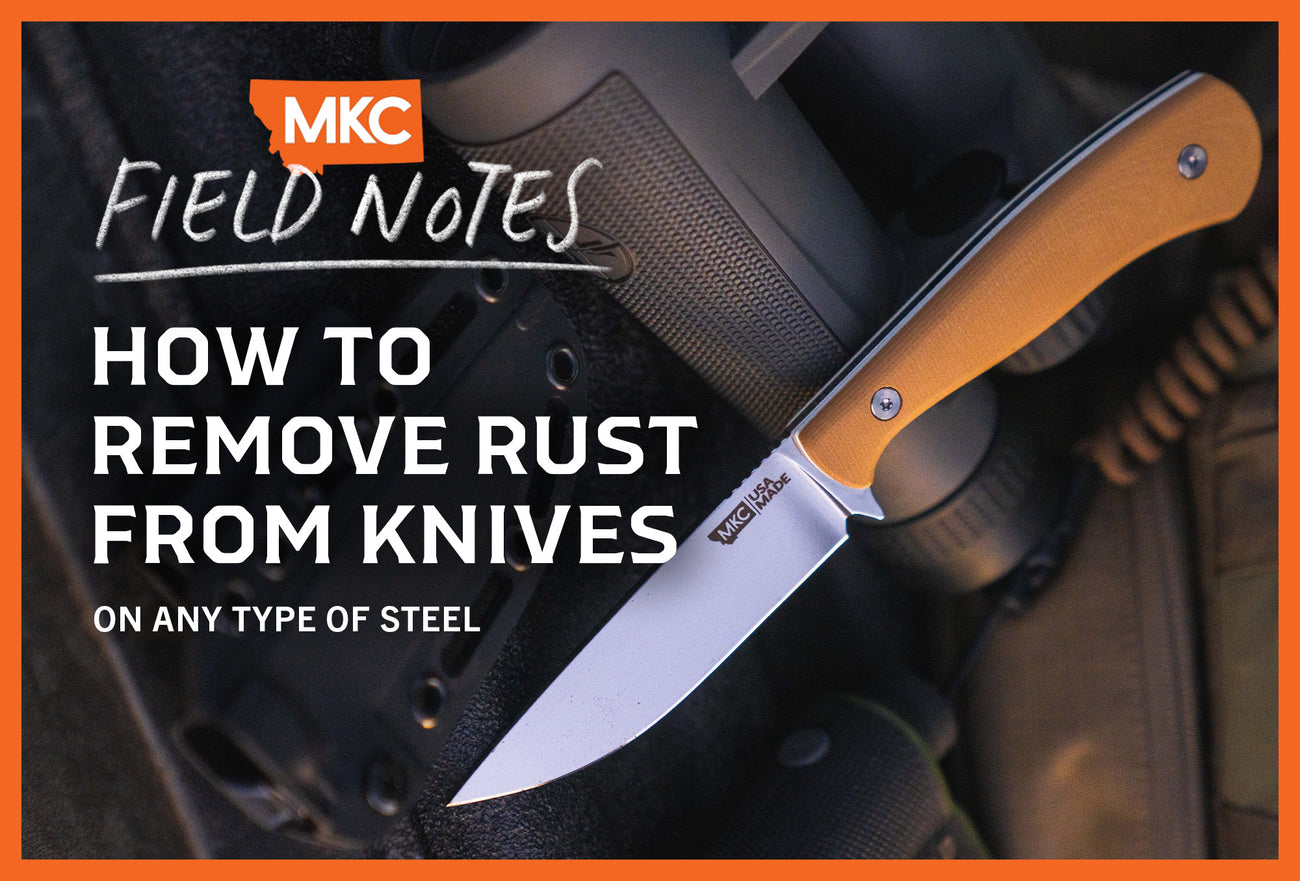
How to Remove Rust from a Knife: A Comprehensive Guide
Rust on a knife is not just an aesthetic issue; it can compromise the integrity and functionality of your blade. Knowing how to remove rust from a knife is essential for maintaining its sharpness, longevity, and safety. This comprehensive guide will explore various methods, from simple household remedies to more advanced techniques, ensuring you can restore your knife to its former glory.
Understanding Rust and Its Impact
Rust, scientifically known as iron oxide, forms when iron or an iron alloy like steel is exposed to oxygen and moisture. This electrochemical process corrodes the metal, creating a flaky, reddish-brown layer on the surface. If left untreated, rust can weaken the metal, leading to pitting, loss of sharpness, and eventual structural failure. Therefore, timely action to remove rust from a knife is crucial.
Why Knives Are Prone to Rust
Knives, especially those used in kitchens or outdoors, frequently come into contact with moisture and acidic substances. Carbon steel knives, prized for their sharpness and edge retention, are particularly susceptible to rust due to their high iron content. Stainless steel knives, while more resistant, can still rust under certain conditions, especially if the protective chromium oxide layer is damaged.
Preventative Measures: The Best Defense Against Rust
Before diving into rust removal methods, it’s important to emphasize preventative measures. Proper care and maintenance can significantly reduce the likelihood of rust formation. Here are some key strategies:
- Thorough Cleaning: Always wash your knife immediately after use with warm, soapy water. Avoid leaving it in the sink or dishwasher, as prolonged exposure to moisture encourages rust.
- Drying Completely: After washing, thoroughly dry your knife with a clean towel. Pay attention to the handle and any crevices where moisture can accumulate.
- Oiling the Blade: Apply a thin coat of food-grade mineral oil or camellia oil to the blade after drying. This creates a protective barrier against moisture and oxygen.
- Proper Storage: Store your knife in a dry, well-ventilated area. Knife blocks, sheaths, or magnetic strips are ideal for preventing contact with other utensils that may retain moisture.
Methods for Removing Rust from a Knife
If rust has already formed on your knife, don’t despair. Several effective methods can help you remove rust from a knife and restore its condition. The choice of method depends on the severity of the rust and the type of knife.
Simple Household Remedies
For light rust, common household items can often do the trick. These methods are generally safe and non-abrasive, making them suitable for delicate blades.
Baking Soda Paste
Baking soda is a mild abrasive that can effectively remove light rust. Mix baking soda with water to form a thick paste. Apply the paste to the rusted areas of the knife and let it sit for 30 minutes to an hour. Then, scrub gently with a soft cloth or sponge. Rinse thoroughly with water and dry completely. The baking soda helps to loosen the rust, making it easier to wipe away. This is a gentle way to remove rust from a knife without causing scratches.
Vinegar Soak
Vinegar, particularly white vinegar, is a mild acid that can dissolve rust. Submerge the rusted portion of the knife in vinegar for several hours or overnight. The longer the soak, the more effective the vinegar will be in loosening the rust. After soaking, scrub the knife with a non-abrasive sponge or cloth. Rinse thoroughly with water and dry completely. Be cautious with prolonged soaking, as vinegar can also corrode the underlying metal if left for too long. This method is effective to remove rust from a knife if the rust is not too deep.
Lemon Juice and Salt
The acidity of lemon juice combined with the abrasive properties of salt creates a powerful rust-removing combination. Sprinkle salt liberally over the rusted areas of the knife. Squeeze lemon juice over the salt, ensuring the rust is thoroughly covered. Let the mixture sit for a few hours, then scrub with a lemon rind or a non-abrasive sponge. Rinse thoroughly with water and dry completely. The citric acid in lemon juice helps to dissolve the rust, while the salt acts as a gentle abrasive to remove it. It’s a natural and effective way to remove rust from a knife.
Potato Power
Believe it or not, a potato can help remove rust from a knife. The oxalic acid in potatoes helps dissolve rust. Simply cut a potato in half and rub the cut side over the rusted areas of the knife. You can also sprinkle some baking soda or salt on the potato for added abrasive power. Let the potato juice sit on the rust for a few hours, then scrub with the potato or a non-abrasive sponge. Rinse thoroughly with water and dry completely.
More Advanced Techniques
For more stubborn or widespread rust, more aggressive methods may be necessary. These techniques require caution and may involve specialized tools or chemicals.
Steel Wool or Scrub Pad
Fine-grade steel wool or a non-abrasive scrub pad can be used to remove rust from a knife. Apply a small amount of oil or lubricant to the steel wool or scrub pad and gently rub the rusted areas in a circular motion. Be careful not to apply too much pressure, as this can scratch the blade. Start with a fine grade and gradually move to a coarser grade if necessary. Rinse thoroughly with water and dry completely. This method is effective for removing surface rust but may not be suitable for heavily pitted areas. It’s a more aggressive way to remove rust from a knife, so use caution.
Rust Remover Products
Commercial rust remover products are available in various forms, including liquids, gels, and sprays. These products contain chemicals that dissolve rust quickly and effectively. Follow the manufacturer’s instructions carefully, as some rust removers can be corrosive and may damage the knife if used improperly. Always wear gloves and eye protection when using rust remover products. Apply the product to the rusted areas, let it sit for the recommended time, and then scrub with a non-abrasive sponge or cloth. Rinse thoroughly with water and dry completely. These are powerful tools to remove rust from a knife, but require care.
Electrolysis
Electrolysis is a more advanced method that uses an electrical current to remove rust. This method requires specialized equipment and knowledge and is best left to experienced individuals or professionals. The knife is submerged in an electrolyte solution and connected to a negative electrode, while a sacrificial metal (such as a piece of scrap steel) is connected to a positive electrode. When an electrical current is applied, the rust is transferred from the knife to the sacrificial metal. Electrolysis is a highly effective method for removing even the most stubborn rust, but it requires careful setup and monitoring. It’s a more technical way to remove rust from a knife.
Restoring the Blade After Rust Removal
After successfully removing the rust, it’s important to restore the blade to its original condition. This may involve sharpening, polishing, and applying a protective coating.
Sharpening
Rust can dull the blade of a knife, so sharpening is often necessary after rust removal. Use a sharpening stone, honing steel, or electric sharpener to restore the edge. Follow the manufacturer’s instructions carefully and practice proper sharpening techniques to avoid damaging the blade.
Polishing
Polishing can help to remove any remaining surface imperfections and restore the shine of the blade. Use a metal polish and a soft cloth to polish the blade in a circular motion. Be sure to remove any residue from the polish after polishing.
Protective Coating
After sharpening and polishing, apply a thin coat of food-grade mineral oil or camellia oil to the blade to protect it from future rust. This will create a barrier against moisture and oxygen, helping to prevent rust from forming again.
Conclusion
Knowing how to remove rust from a knife is a valuable skill for anyone who owns and uses knives regularly. By following the methods outlined in this guide and practicing proper care and maintenance, you can keep your knives in top condition for years to come. Whether you choose to use simple household remedies or more advanced techniques, the key is to act promptly and consistently to prevent rust from causing permanent damage. Remember, a well-maintained knife is not only safer and more efficient to use but also a testament to your commitment to quality and craftsmanship. Don’t let rust compromise your investment; take the time to protect and preserve your knives.
[See also: How to Sharpen a Knife]
[See also: Best Knife Storage Solutions]

